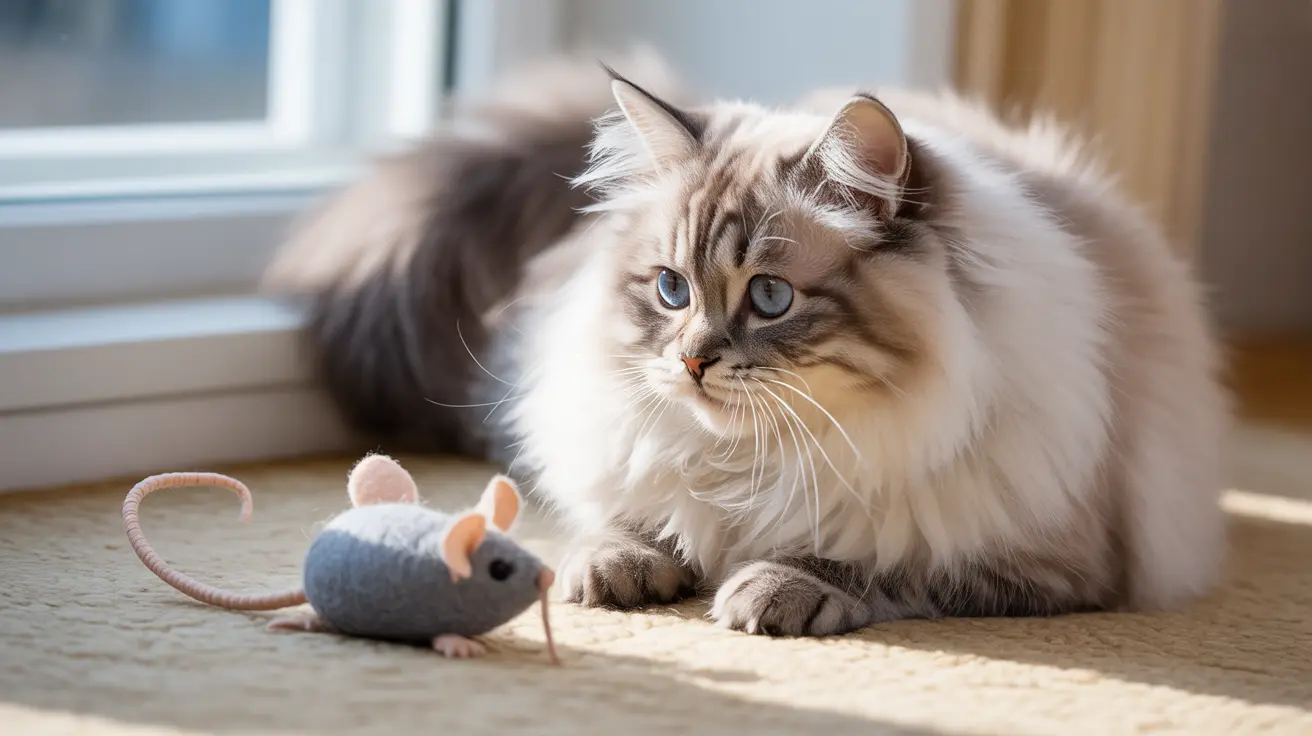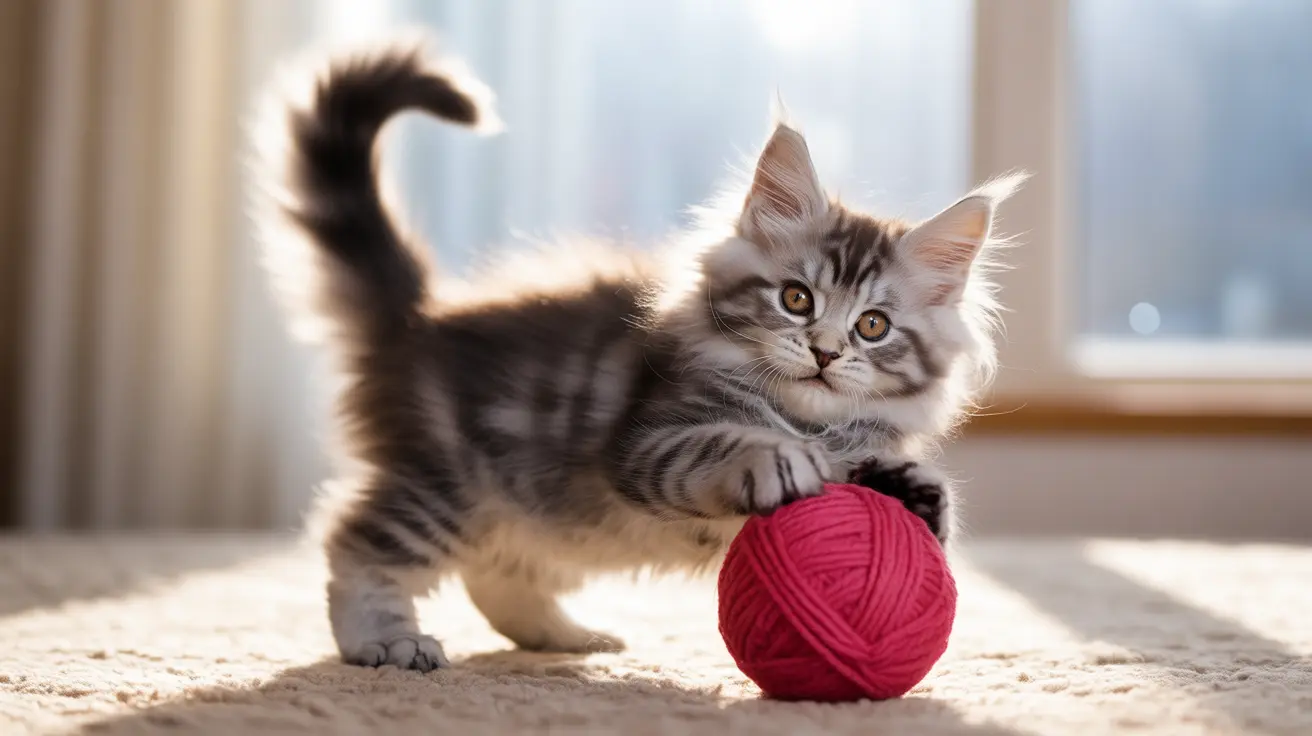Male vs Female Cat Personality Differences: Which Gender Makes the Better Pet?
When considering adding a feline companion to your family, you might wonder if male vs female cat personality differences will impact your choice. While every cat is unique, research and veterinary observations reveal fascinating behavioral patterns between the sexes that can help inform your decision. Understanding these differences becomes particularly important when planning a multi-cat household or seeking the perfect match for your lifestyle.
The truth is, both male and female cats make wonderful companions, but their distinct personality traits, bonding styles, and behavioral tendencies can significantly influence household dynamics. From size variations and temperament differences to territorial behaviors and affection patterns, gender does play a role in shaping your cat's character—though it's far from the only determining factor.
Whether you're a first-time cat owner or expanding your feline family, this comprehensive guide will explore the key personality differences between male and female cats, helping you make an informed decision that leads to years of harmonious companionship.
Physical Differences That Shape Personality
The male vs female cat personality differences often begin with their physical characteristics. Male cats typically exhibit sexual dimorphism, weighing between 10-15 pounds compared to females' 8-12 pounds. This size difference stems from testosterone's role in increasing muscle mass, bone growth, and overall body structure. Male wild cats evolved to be larger to win territorial fights and attract mates—a trait that domestic cats have inherited.
These physical differences extend beyond weight. Intact male cats develop pronounced facial features, including thicker skulls and distinctive cheek pads called "tomcat jowls." However, neutering before sexual maturity prevents these dramatic physical changes while still allowing males to maintain their naturally larger frame.
The size advantage often translates into behavioral confidence. Larger male cats tend to be more tolerant of rough handling and physical play, making them potentially better suited for families with children who might not yet understand gentle pet interaction.
Core Personality Traits by Gender
Male Cat Personality Characteristics
Male cats generally exhibit more boldness in their daily interactions, making them notably outgoing, social, and adventurous compared to their female counterparts. Studies consistently show that neutered males tend to be more affectionate and easygoing, often seeking out human attention and displaying what many owners describe as "dog-like" loyalty.
Food motivation runs strong in male cats, which can be both an advantage and a challenge. While this trait makes training easier and helps with bonding through treat-giving, it also makes males more prone to obesity if their diet isn't carefully managed. Their social nature often extends to accepting new cats in the household more readily than females, though individual personalities always vary.
Male cats typically display more playful behavior throughout their lives, maintaining kitten-like energy well into their senior years. This playfulness manifests in their interaction style with both humans and other cats, often preferring more boisterous, physical play sessions.
Female Cat Personality Characteristics
Female cats tend to be more independent and cautious in their approach to new situations and relationships. This independence shouldn't be mistaken for aloofness—female cats are capable of deep loyalty and affection, but they're often more selective about when and how they display it.
Their cautious nature makes female cats excellent judges of character and situations. They're more likely to assess a new person or environment thoroughly before deciding to engage, which can make them appear standoffish initially but often results in more meaningful, lasting bonds once trust is established.
Female cats generally exhibit superior hunting instincts, reflecting their evolutionary role as providers for kittens. This translates into more focused, strategic play behavior and often makes them more effective at controlling household pests. Their independent streak also means they're typically less demanding of constant attention, making them suitable for owners with busier schedules.
Impact of Spaying and Neutering on Personality
The most dramatic differences in male vs female cat personality differences occur between intact and altered cats. Unneutered males exhibit strong territorial behaviors, including roaming widely, marking territory with strong-smelling urine, and showing aggression toward other males. These behaviors are driven by testosterone and the biological imperative to find mates and defend territory.
Neutering significantly reduces these problematic behaviors, making male cats more sociable and peaceful household companions. However, some gender-specific traits persist even after neutering. Males typically retain their larger size and more sociable nature, while still showing increased tolerance for new cats entering their established territory.
Unneutered females display different but equally challenging behaviors when in heat, including excessive vocalization, restlessness, and attempts to escape outdoors. Unlike males, intact females often cooperate in group settings, particularly in kitten-rearing and collective defense situations. Spaying eliminates heat cycles and reduces the likelihood of urine spraying, though stress-related spraying can still occur in both sexes regardless of alteration status.
Multi-Cat Household Dynamics
Understanding male vs female cat personality differences becomes crucial when managing multi-cat households. Groups of same-sex cats generally experience better harmony, particularly when they're littermates or introduced at a young age. However, strong bonds frequently form between mixed-gender pairs, especially when both cats are spayed or neutered.
Female cats living together often display more affiliative behaviors, such as mutual grooming and cooperative territory sharing. This stems from their natural inclination to work together in raising offspring and defending communal spaces. Males in groups may establish a more obvious hierarchy but often coexist peacefully once dominance is settled.
When introducing new cats to established households, neutered males typically show greater acceptance of newcomers than females. Female cats may take longer to accept changes to their social structure, requiring more patience and gradual introduction techniques.
Bonding Patterns with Humans
While there's no conclusive scientific proof that a cat's sex directly affects its relationship with humans, owner surveys consistently reveal interesting patterns. Male cats often form what appears to be more demonstrative bonds, actively seeking attention through head butting, lap sitting, and following their owners around the house.
Female cats tend to bond more selectively but often just as deeply. They may choose one primary human in the household for their strongest attachment while remaining cordial but distant with others. This selective bonding can create incredibly strong one-on-one relationships that many owners find deeply rewarding.
Genetics and early socialization with humans prove far more crucial than sex in determining a cat's personality and bonding capacity. Kittens exposed to positive human interaction during their critical socialization period (2-9 weeks) develop stronger human bonds regardless of gender.
Play Styles and Enrichment Needs
The male vs female cat personality differences extend to their preferred play styles and enrichment needs. Male cats typically enjoy more physical, boisterous play that mimics wrestling and rough-and-tumble interactions. They often prefer toys they can grab, kick, and carry around, and they're more likely to engage in extended play sessions.
Female cats generally favor more strategic, hunting-focused play activities. They excel at stalking games, prefer toys that mimic prey behavior, and often show more interest in puzzle feeders and problem-solving activities. Their play sessions may be shorter but more intense and focused.
Both genders benefit from environmental enrichment, but their preferences may differ. Males might enjoy larger climbing structures and interactive toys they can manipulate with their paws, while females often appreciate hiding places, perching spots for observation, and toys that challenge their hunting instincts.
Health Considerations by Gender
Lifespan differences between male and female cats largely depend on whether they're spayed or neutered and their living environment. Spayed females often live one to two years longer than neutered males, partly due to males' bolder nature leading to higher risk-taking behaviors and their increased susceptibility to urinary blockages.
Neutering impacts nutritional needs differently between the sexes. Male cats show a higher tendency toward weight gain post-neutering, requiring more careful diet management to prevent obesity. Female cats may experience metabolic changes after spaying but typically show better portion control naturally.
Both genders benefit significantly from spaying or neutering, with altered cats living longer, healthier lives regardless of sex. The procedure reduces cancer risks, eliminates reproductive health issues, and significantly improves behavioral stability.
Making the Right Choice for Your Household
When deciding between male and female cats, consider your household's specific needs and dynamics. If you have children or prefer a more interactive, attention-seeking companion, a neutered male might be ideal. For those who appreciate a more independent but deeply loyal companion, a spayed female could be the perfect match.
Energy levels should match between new cats and existing pets. If you have senior cats, consider adopting older cats regardless of gender. A pair of kittens from the same litter often provides the easiest integration, as they've already established their social bonds.
Most importantly, meet different cats and let natural connections develop. While understanding male vs female cat personality differences provides helpful guidance, the individual cat's temperament, early socialization experiences, and your personal connection matter more than gender alone.
Frequently Asked Questions
Are male cats more affectionate than female cats?
Male cats generally display more demonstrative affection, actively seeking attention and physical contact. However, female cats can be equally affectionate but often show it more selectively, forming deep bonds with their chosen humans.Do male or female cats get along better with other cats?
Neutered males typically show greater tolerance when new cats enter their territory. Same-sex groups usually experience better harmony, but strong bonds often form between mixed-gender pairs, especially when both are spayed or neutered.Which gender is better for families with children?
Male cats' larger size and tolerance for rough handling often make them better suited for families with young children. However, individual temperament and proper socialization matter more than gender.Do male and female cats have different hunting abilities?
Female cats generally exhibit superior hunting instincts, reflecting their evolutionary role as providers for kittens. They tend to be more strategic and focused hunters compared to males.Is there a personality difference between spayed/neutered cats?
Yes, spaying and neutering significantly reduce gender-specific behaviors like territorial marking, roaming, and aggression. However, some personality traits persist, with males remaining more social and females maintaining their independence.Which gender is more prone to health problems?
Male cats are more susceptible to urinary blockages and may be more prone to obesity after neutering. Females often live slightly longer, but both genders benefit equally from spaying/neutering for overall health.Do male cats require more attention than female cats?
Male cats typically seek more active interaction and attention from their owners, while female cats are more content with independent activities. However, both genders need social interaction and environmental enrichment for optimal well-being.
Conclusion
While male vs female cat personality differences do exist, they represent general tendencies rather than absolute rules. Male cats typically offer more demonstrative affection and social behavior, while female cats provide independent companionship with selective but deep loyalty. The impact of spaying and neutering cannot be overstated—these procedures significantly reduce problematic gender-specific behaviors while preserving the positive personality traits that make each gender special.
Ultimately, the best cat for your household depends on individual personality, proper socialization, and the connection you feel with a particular animal. Whether you choose a playful male or an independent female, understanding these personality differences will help you provide the best possible care and build a stronger bond with your feline companion. Focus on meeting different cats, considering your household dynamics, and choosing the individual that feels right for your family's unique situation.






